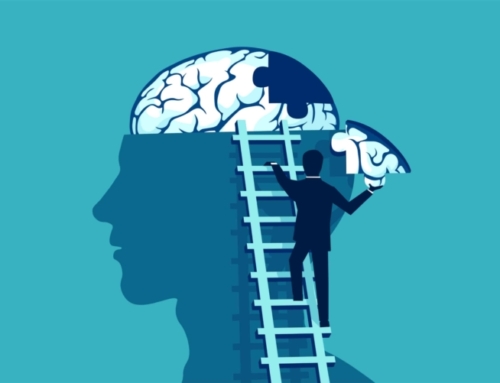One phenomenon that has intrigued me for my entire career has been the frequent sense of badness that patients with borderline personality disorder seem to have about themselves and have communicated to me directly and indirectly.
I’m excluding the use of “bad” with the meaning of lack of skill, such as, “I’m bad at math” or “I’m really bad at basketball.” This use of “bad” distances the self from the lack of skill, which can indeed impact one’s self-esteem but need not be central to one’s core self-identity. I can easily say “I suck at math” and laugh about it and suffer no sense of diminished self-worth by admitting to it.
Rather, I’m referring to the use of bad as a self-assessment of one’s core self-identity. I’ve identified three overlapping senses in which “bad” is used in this sense by patients with BPD.
- Bad as defectiveness: It is this category of bad that is evoked when patients say they are broken, damaged goods, really f*cked up, really stupid, or a runt.
- Bad as in lacking moral goodness: Many patients seem to have internalized a sense of being bad as in being immoral or evil due to some core lack of wholesomeness or goodness. One patient told me he was a “bad seed.” Another that he feels like the “devil’s child.” Another told me she often feels so enraged that she “could tear people … or myself … apart” and, thus, “felt far from God.” Also, I believe the main intention for non-suicidal self-injurious behavior is self-soothing and affect regulation, but I suspect it can also function as self-punishment for one’s badness.
- Bad as unworthiness: This sense of badness may be a direct result from a person’s internalized sense of defectiveness and lack of moral goodness, but I sense that it has partial independence from those two prior senses. Many patients with BPD seem to have an internalized sense that they simply do not deserve to be treated well, that they are simply unworthy of respect and love, that they are unlike and less than other people.
It is these senses of defectiveness, lacking in goodness, and unworthiness that drives persons to seek succor and wholeness in others but also to find the intimacy of the relationship unbearable because of the expectation that they will be found out and, even worse, that once found out, their partner will react with horror and disgust. Most patients thus fear being rejected, abandoned, shamed, and humiliated. Some patients also fear their, at times, all-consuming rage. Thus, these powerful and unstable effects interact with the damaged self-identity, adding to the interpersonal volatility.
Schema therapy sheds light on how badness is experienced and acted out in persons with BPD. Schema therapy uses two constructs to understand self-identity and functioning. The first concept is Early Maladaptive Schemas, that is, integrated patterns of perceiving, thinking, feeling, and behaving that are maladaptive in that they lead to emotional suffering and to interpersonal and career problems. These schemas arise due to unmet childhood needs, such as for safety, acceptance, stability, and love. Studies suggest that persons with BPD score high in three schemas: defectiveness/shame, mistrust/abuse, and insufficient self-control. The second construct of schema therapy is the concept of modes. Whereas schemas are ongoing traits that lead to emotional and behavioral dispositions, modes are the quickly shifting affective states that activate one or a group of maladaptive schemas. One study of Schema therapy by Bach and Farrell found that persons with BPD more frequently enter the modes of Vulnerable Child, Angry Child, and (low levels of) Happy Child. Another study, by Lobbestael et al, found that the frequently deployed modes in BPD (as well as in antisocial personality disorder) were Detached Protector, Punitive Parent, Abandoned/Abused Child and Angry Child modes. A patient in a study by Tan et al reported her experience before and after therapy, “Back then the punishing voices were a constant part in my head and the memories of the people that are represented by these voices come up. That is not the case anymore. Today I only see the words, the sentences, without the memories coming up.”
When one is a solo practitioner, treating patients with BPD is challenging. When available, the evidence-based psychosocial treatments for BPD are dialectical behavior therapy, schema therapy, mentalization therapy, transference-focused therapy and systems training for emotional predictability and problem solving (STEPPS). Additionally, there is an evidence-based treatment available to us general solo practitioners, an approach developed by Dr. J Gunderson and called good psychiatric management (GPM). I’m grateful to this last option because it brings hope, confidence, and a set of practical interventions available to the generalist mental health clinician. I will present highlights of GPM in a future post.
But to end this post, I believe that simply being aware of patients’ commonly occurring sense of badness in its many senses can improve our understanding of, responses to, and deployment of treatment interventions for the benefit persons with BPD.
Please share your experiences working with persons with BPD? What have you learned about them? What have you found works and what doesn’t? What helps you establish a person-to-person relationship with them, despite their often challenging behaviors?
Dr Jack
References
Agnew G, Shannon C, Ryan T, et al. Self and identity in women with symptoms of borderline personality: A qualitative study. Int J Qualitative Stud Health Well-being 2016, 11: 30490. http://dx.doi.org/10.3402/qhw.v11.30490
Bach and Farrell, 2018: https://doi.org/10.1016/j.psychres.2017.10.039
Choi-Kain LW, Gunderson J. Applications of Good Psychiatric Management for Borderline Personality Disorder: A Practical Guide, 2019. American Psychiatric Publishing Inc.
Gunderson J. Handbook of Good Psychiatric Management for Borderline Personality Disorder, 2014. American Psychiatric Publishing Inc.
Lobbestael J, Arntz A, Sieswerda S. Schema modes and childhood abuse in borderline and antisocial personality disorders. J Behav Therapy Exp Psychiat 36 (2005) 240–253. https://doi:10.1016/j.jbtep.2005.05.006
Tan YM, Lee CW, AVerback LE, et al. Schema therapy for borderline personality disorder: A qualitative study of patients’ perceptions. PLoS ONE 13(11): e0206039. https://doi.org/10.1371/journal.pone.0206039
LanguageBrief
Today’s Quotes
“The difference between my darkness and your darkness is that I can look at my own badness in the face and accept its existence while you are busy covering your mirror with a white linen sheet. The difference between my sins and your sins is that when I sin, I know I’m sinning while you have actually fallen prey to your own fabricated illusions.”
C JoyBell C.“When a man is getting better he understands more and more clearly the evil that is still left in him. When a man is getting worse, he understands his own badness less and less.”
C.S. Lewis“It seemed so natural, receiving it, watching others receive it, assuming that the approval of others determined our worth. Then one day we found we couldn’t feel any worth without it. We’d forgotten that we were gifted in ways unimaginable, created with a unique purpose like no other, that people are hurting, that we beat that same hurt and we can help them. There is no one as valuable as you. Unlearn that old lie.”
Lee Goff“I don’t want to see anyone. I lie in the bedroom with the curtains drawn and nothingness washing over me like a sluggish wave. Whatever is happening to me is my own fault. I have done something wrong, something so huge I can’t even see it, something that’s drowning me. I am inadequate and stupid, without worth. I might as well be dead.”
Character of Margaret Atwood







Leave A Comment